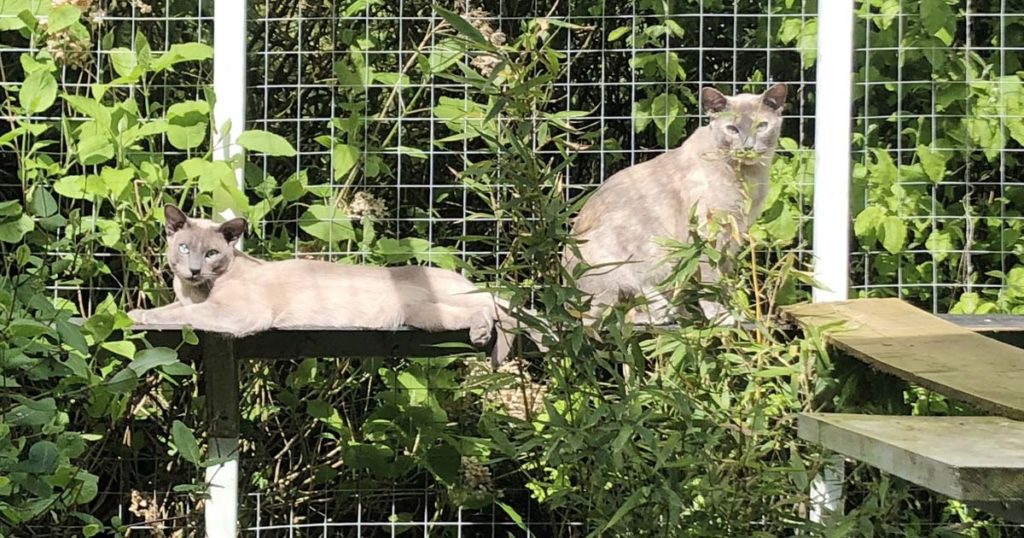by Carol Hopkins
As the warmer weather arrives, reptiles such as snakes and lizards start to make an appearance around our homes, farms and reserves. The re-emergence of snakes may cause alarm for some people, but lizards pose no threat at all. In fact, they can be really helpful in the garden for controlling pests such as slugs and snails.
In the Murrindindi Shire, one of the most common lizards to emerge from hiding after winter is the eastern blue-tongue lizard. Growing to around 60cm long, it’s the largest member of the skink family, of which there are more than 320 species in Australia. The eastern blue-tongue is grey to pale brown with darker stripes running across its body and a dark line running from its eye to its ear and sometimes down its neck. Its legs are quite short and often not visible, and this factor, along with the stripes, can lead some people to think it is a tiger snake, particularly if the head of the lizard is hidden under a rock or log.
The lizard gets its name from its bright blue tongue, which is used to deter predators. When threatened, it opens its mouth and sticks out its tongue. It may also puff up its body and hiss. If that doesn’t work, its strong jaws and teeth can deliver a painful bite. As a last resort, this lizard, like all members of the skink family, can actually drop its tail (the tail eventually grows back). Its main predators are large snakes, goannas, birds of prey such as eagles and falcons, kookaburras and feral or domestic cats and dogs.
Like all lizards, eastern blue-tongues are cold blooded. This means they need an external source of heat, such as the sun, to maintain their body temperature. As soon as the weather warms up, they come out of their winter hiding places and bask in the sun. Not surprisingly, they are mostly active during the day, and at night find shelter under logs, rocks, leaf litter and houses. Blue-tongues often spend many years living in the same location.
It’s not just the warmer weather that brings these lizards out of hiding. September to November is their mating season, and the males are keen enough to travel up to three kilometres in search of a mate. But the lizard mating season isn’t all wine and roses. Males often engage in vicious fights with each other defending their territory, and even the mating act can look more like a street brawl than an act of happy union, often leaving the females with teeth and claw wounds.
About three to four months after mating the females give birth to around ten live offspring. This is very unusual for lizards as they normally lay eggs. For blue-tongues, the young develop in eggs held inside the female’s body. When the young are sufficiently developed, they hatch from the eggs and are then born live. The baby lizards are pretty much able to fend for themselves right from the get go and so motherhood for a female blue-tongue is a brief and carefree experience. Ovoviviparity, as this whole process is called, is a very beneficial adaptation for the species as there is no risk of the eggs being eaten by predators.
Blue-tongues reach sexual maturity after four years and have quite long lifespans – as much as 20 years. They are easy-to-please eaters, living on plants, fruits, caterpillars, slugs, snails, beetles, millipedes, crickets and worms. They have even been known to steal a morsel of dog or cat food from an outdoor bowl. Their snail-eating skills are second to none because they have developed the knack of crushing snail shells, separating and swallowing the soft body before ejecting the shell particles.
Having blue-tongue lizards around your home or farm is a real boon. They are completely harmless – although they can give you a painful nip if harassed – and can help to control garden pests such as snails, caterpillars and slugs. One of the greatest threats to their health comes from using snail baits. The poisons in these baits not only harm the snails and slugs but also the blue-tongues who may eat them. So, if you have blue-tongue lizards around, it’s best not to use these products. Domestic cats and dogs also pose a threat. And when driving, keep an eye out for them basking on the road. Too many poor lizards have been squashed by inattentive drivers.
For the moment, populations of the eastern blue-tongue lizard are not under threat. However, there is no room for complacency. A recent report in the scientific journal Nature found that at least a fifth of all reptile species throughout the world are threatened with extinction, mostly due to climate change. So, whatever we can do to create a safe and healthy home for this harmless and helpful lizard has to be a good thing.



